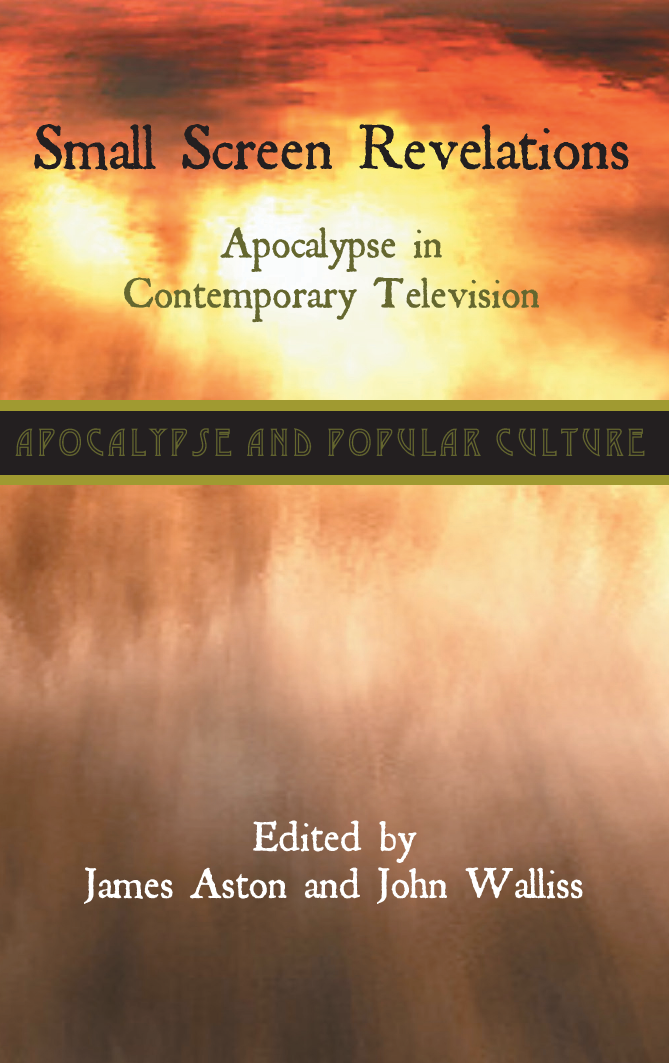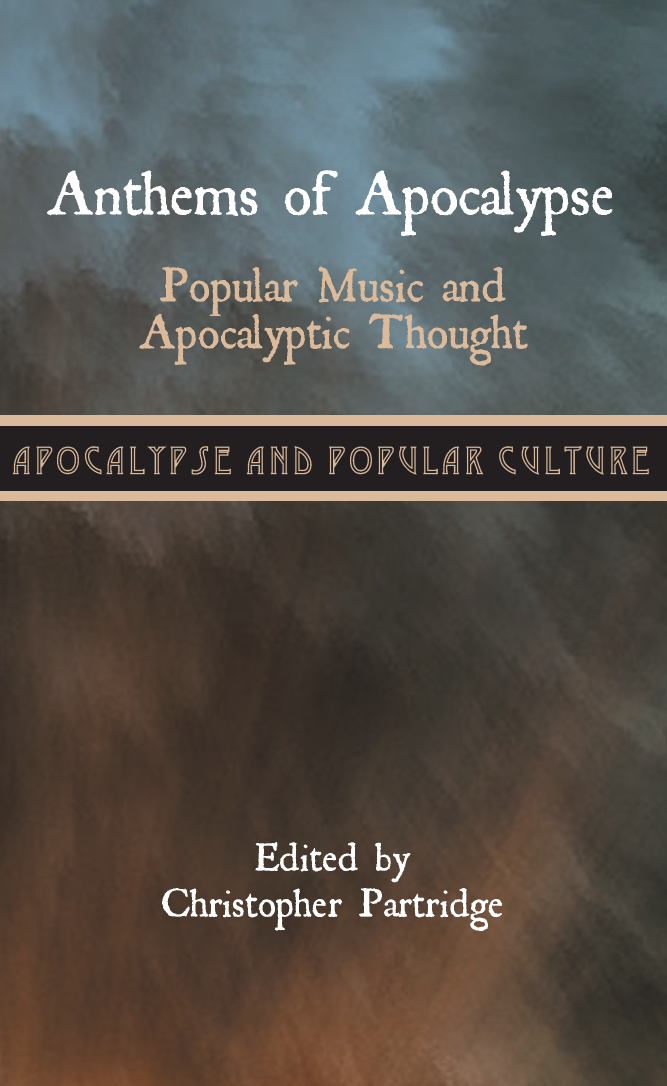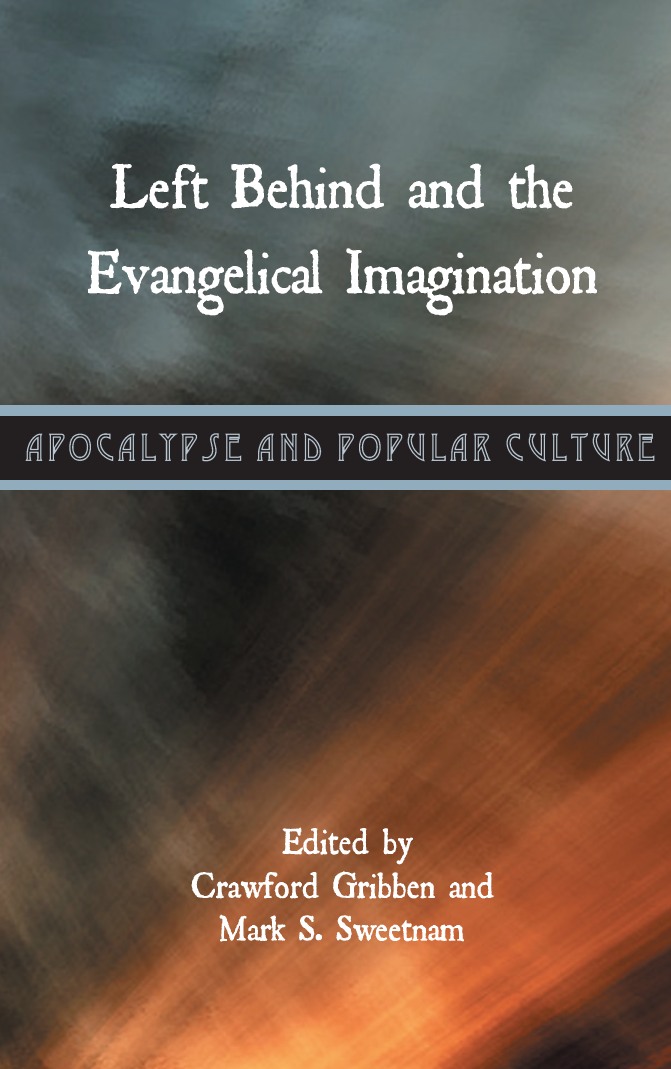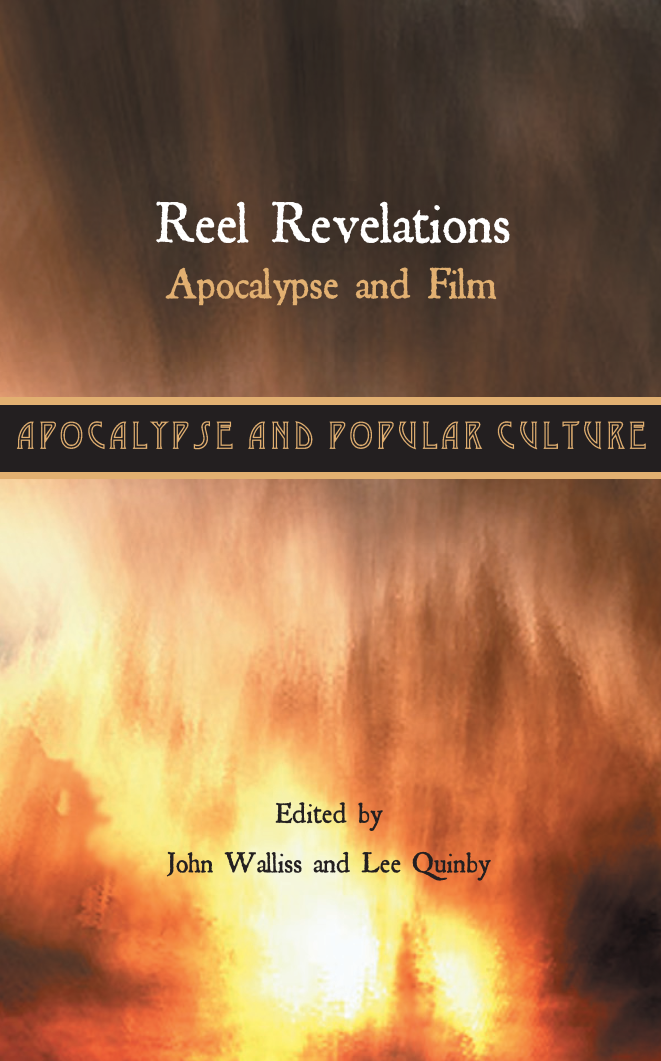Small Screen Revelations: Apocalypse in Contemporary Television
Published: Mar 2013
£50.00
Representations of apocalyptic themes and motifs in popular culture has a long history, and a number of books and edited collections have examined their influence on popular film and music. Small Screen Revelations shifts the attention to popular television, examining the ways in which contemporary television drama and news draw on both the language and imagery of apocalyptic texts.
Essays in the collection examine topics such as the representation of apocalyptic prophecies and prophets in television news and documentaries; how news of natural disasters draws on apocalyptic language to frame the events, and how drama series use, develop and sometimes seek to subvert apocalyptic motifs. Thus, Small Screen Revelations offers a repositioning of the importance of television in representing the apocalypse, while providing a pertinent addition to the examination of how and for what purpose the apocalypse is used in popular culture.
Small Screen Revelations: Apocalypse in Contemporary Television
£50.00
Representations of apocalyptic themes and motifs in popular culture has a long history, and a number of books and edited collections have examined their influence on popular film and music. Small Screen Revelations shifts the attention to popular television, examining the ways in which contemporary television drama and news draw on both the language and imagery of apocalyptic texts.
Essays in the collection examine topics such as the representation of apocalyptic prophecies and prophets in television news and documentaries; how news of natural disasters draws on apocalyptic language to frame the events, and how drama series use, develop and sometimes seek to subvert apocalyptic motifs. Thus, Small Screen Revelations offers a repositioning of the importance of television in representing the apocalypse, while providing a pertinent addition to the examination of how and for what purpose the apocalypse is used in popular culture.
The End Will Be Graphic: Apocalyptic in Comic Books and Graphic Novels
Published: Jun 2012
£45.00
This collection is based on the premise that apocalyptic imagery and themes pervade not only cultural products that employ specifically biblical imagery but are also found in media that do not purport to impart biblical or even religious messages. Comic books and graphic novels are the focus here because, it is suggested, they are the medium that comes the closest to the imaginative malleability found in the history of biblical interpretation. In Part One, the focus is on Indie/Creator-owned works. Emily Laycock demonstrates the overwhelming influence of Herbert W. Armstrong and his apocalyptic Worldwide Church of God on Basil Wolverton's work, especially his biblical art. Aaron Kashtan then introduces us to Kevin Huizenga's short 'Jeepers Jacobs', in which the title character —a theologian whose main area of research is the Christian doctrine of Hell —tries to convert an acquaintance with odd and fatal results. In her chapter, Diana Green examines Alan Moore's Promethea , a character whose purpose is to initiate an Apocalypse but whose journey is much more complicated. Finally, A. David Lewis engages humorous and profane examples of apocalyptic imagery in the recent Indie comics Battle Pope and The Chronicles of Wormwood . Part Two examines more mainstream works and begins with Terry Ray Clark's adroit examination of how Kingdom Come utilizes both the functions and forms of ancient apocalyptic literature. Greg Stevenson then analyses a variety of texts —including X-Men: The Age of Apocalypse and issues 666 of Superman and Batman —to discern the way(s) in which the mythological language of apocalyptic and the mythology of superheroes interact. And finally, Greg Garrett provides a broad and thoughtful rumination on the two most widely read mainstream comics that deal with the End of Days: Kingdom Come and Watchmen . This is the fifth volume in the series Apocalypse and Popular Culture; see also (1) Walliss and Quinby, Reel Revelations , (2) Gribben and Sweetnam, Left Behind and the Evangelical Imagination , (3) Howard, Network Apocalypse , (4) Partridge, Anthems of Apocalypse , and (6) Aston and Walliss, Small Screen Revelations .
The End Will Be Graphic: Apocalyptic in Comic Books and Graphic Novels
£45.00
This collection is based on the premise that apocalyptic imagery and themes pervade not only cultural products that employ specifically biblical imagery but are also found in media that do not purport to impart biblical or even religious messages. Comic books and graphic novels are the focus here because, it is suggested, they are the medium that comes the closest to the imaginative malleability found in the history of biblical interpretation. In Part One, the focus is on Indie/Creator-owned works. Emily Laycock demonstrates the overwhelming influence of Herbert W. Armstrong and his apocalyptic Worldwide Church of God on Basil Wolverton's work, especially his biblical art. Aaron Kashtan then introduces us to Kevin Huizenga's short 'Jeepers Jacobs', in which the title character —a theologian whose main area of research is the Christian doctrine of Hell —tries to convert an acquaintance with odd and fatal results. In her chapter, Diana Green examines Alan Moore's Promethea , a character whose purpose is to initiate an Apocalypse but whose journey is much more complicated. Finally, A. David Lewis engages humorous and profane examples of apocalyptic imagery in the recent Indie comics Battle Pope and The Chronicles of Wormwood . Part Two examines more mainstream works and begins with Terry Ray Clark's adroit examination of how Kingdom Come utilizes both the functions and forms of ancient apocalyptic literature. Greg Stevenson then analyses a variety of texts —including X-Men: The Age of Apocalypse and issues 666 of Superman and Batman —to discern the way(s) in which the mythological language of apocalyptic and the mythology of superheroes interact. And finally, Greg Garrett provides a broad and thoughtful rumination on the two most widely read mainstream comics that deal with the End of Days: Kingdom Come and Watchmen . This is the fifth volume in the series Apocalypse and Popular Culture; see also (1) Walliss and Quinby, Reel Revelations , (2) Gribben and Sweetnam, Left Behind and the Evangelical Imagination , (3) Howard, Network Apocalypse , (4) Partridge, Anthems of Apocalypse , and (6) Aston and Walliss, Small Screen Revelations .
Anthems of Apocalypse: Popular Music and Apocalyptic Thought
Published: Mar 2012
£50.00
Popular music is no stranger to apocalyptic discourse. Whether focusing on biblical or secular apocalypses, musicians often want to tell us things about the end of the world we may not have wanted to know in ways we may not have thought about before. This volume seeks to introduce readers to some of these messengers and their anthems of apocalypse. Roland Boer's discussion of Nick Cave indicates that references to the portents and monsters of the apocalypse have been used to refer, not to an age to come, but to the authorities and demons of the present world. Likewise, Kennet Granholm's chapter on the vegan straight edge band Earth Crisis shows that biblical apocalyptic provides a lens through which to examine environmental politics. This is also true of the work of Rage against the Machine's Tom Morello, who, as Michael Gilmour discusses, provides a powerful socialist critique of capitalism, American imperialism, new left-activism and identity politics. Along with these 'secular' uses of biblical apocalyptic are, of course, the more conspicuously Christian theological treatments: Mark Sweetnam discusses dispensationalism in Johnny Cash's music; Marcus Moberg explores eschatological themes in Christian heavy metal; and Steve Knowles looks at the uses of apocalyptic imagery in the music of Extreme. Alongside these are the perennially popular esoteric interpretations of biblical apocalyptic thought. These are explored in Rupert Till's analysis of heavy metal and SÌ©rgio Fava's discussion of apocalyptic folk. This is the fourth volume in the series Apocalypse and Popular Culture; see also (1) Walliss and Quinby, Reel Revelations , (2) Gribben and Sweetnam, Left Behind and the Evangelical Imagination , (3) Howard, Network Apocalypse , (5) Clanton, The End Will Be Graphic , and (6) Aston and Walliss, Small Screen Revelations .
Anthems of Apocalypse: Popular Music and Apocalyptic Thought
£50.00
Popular music is no stranger to apocalyptic discourse. Whether focusing on biblical or secular apocalypses, musicians often want to tell us things about the end of the world we may not have wanted to know in ways we may not have thought about before. This volume seeks to introduce readers to some of these messengers and their anthems of apocalypse. Roland Boer's discussion of Nick Cave indicates that references to the portents and monsters of the apocalypse have been used to refer, not to an age to come, but to the authorities and demons of the present world. Likewise, Kennet Granholm's chapter on the vegan straight edge band Earth Crisis shows that biblical apocalyptic provides a lens through which to examine environmental politics. This is also true of the work of Rage against the Machine's Tom Morello, who, as Michael Gilmour discusses, provides a powerful socialist critique of capitalism, American imperialism, new left-activism and identity politics. Along with these 'secular' uses of biblical apocalyptic are, of course, the more conspicuously Christian theological treatments: Mark Sweetnam discusses dispensationalism in Johnny Cash's music; Marcus Moberg explores eschatological themes in Christian heavy metal; and Steve Knowles looks at the uses of apocalyptic imagery in the music of Extreme. Alongside these are the perennially popular esoteric interpretations of biblical apocalyptic thought. These are explored in Rupert Till's analysis of heavy metal and SÌ©rgio Fava's discussion of apocalyptic folk. This is the fourth volume in the series Apocalypse and Popular Culture; see also (1) Walliss and Quinby, Reel Revelations , (2) Gribben and Sweetnam, Left Behind and the Evangelical Imagination , (3) Howard, Network Apocalypse , (5) Clanton, The End Will Be Graphic , and (6) Aston and Walliss, Small Screen Revelations .
Network Apocalypse: Visions of the End in an Age of Internet Media
Published: May 2011
£50.00
In the twenty-first century, religious belief is undergoing change, driven in part by new communication technologies. Such technologies have often given rise to notable changes in religion, some of the most revolutionary of them being apocalyptic in character. What, then, is the nature of the changes in religious belief created or enabled by the Internet?
In this collection, the first of its kind, nine scholars consider whether the empowerment offered by Internet communication generally encourages the exchange of ideas or whether, rather, it allows individuals to seal themselves off into ideological ghettos of the like-minded. These nine essays explore those possibilities by documenting and analysing the diversity of apocalyptic belief online.
Andrew Fergus Wilson looks at those using the Internet to explore the syncretism that lies at the heart of the 'cultic milieu'. William A. Stahl examines the online discourse about climate change to find the apocalyptic structures undergirding it. Dennis Beesley examines End Times discourse on the video sharing Web site YouTube. J.L. Schatz explores how the apocalyptic imaginings of science fiction set the trajectory of our shared future. Amarnath Amarasingam documents how the Internet is encouraging the belief that President Barack Obama is the Antichrist. Salvador Jimenez Murguia analyses an Internet-based service offered to those wishing to communicate with their loved ones who might be 'left behind' after the anticipated 'Rapture'. David Drissel documents how social networking facilitates connections among Muslims who share a belief in a nearing apocalypse. James Schirmer examines an apocalyptic computer game individuals use to explore personal ethics. Robert Glenn Howard documents the first Internet-based new religious movement —reflected in the beliefs of the suicidal 1997 'Heaven's Gate' group, extant in their archived websites.
Network Apocalypse: Visions of the End in an Age of Internet Media
£50.00
In the twenty-first century, religious belief is undergoing change, driven in part by new communication technologies. Such technologies have often given rise to notable changes in religion, some of the most revolutionary of them being apocalyptic in character. What, then, is the nature of the changes in religious belief created or enabled by the Internet?
In this collection, the first of its kind, nine scholars consider whether the empowerment offered by Internet communication generally encourages the exchange of ideas or whether, rather, it allows individuals to seal themselves off into ideological ghettos of the like-minded. These nine essays explore those possibilities by documenting and analysing the diversity of apocalyptic belief online.
Andrew Fergus Wilson looks at those using the Internet to explore the syncretism that lies at the heart of the 'cultic milieu'. William A. Stahl examines the online discourse about climate change to find the apocalyptic structures undergirding it. Dennis Beesley examines End Times discourse on the video sharing Web site YouTube. J.L. Schatz explores how the apocalyptic imaginings of science fiction set the trajectory of our shared future. Amarnath Amarasingam documents how the Internet is encouraging the belief that President Barack Obama is the Antichrist. Salvador Jimenez Murguia analyses an Internet-based service offered to those wishing to communicate with their loved ones who might be 'left behind' after the anticipated 'Rapture'. David Drissel documents how social networking facilitates connections among Muslims who share a belief in a nearing apocalypse. James Schirmer examines an apocalyptic computer game individuals use to explore personal ethics. Robert Glenn Howard documents the first Internet-based new religious movement —reflected in the beliefs of the suicidal 1997 'Heaven's Gate' group, extant in their archived websites.
Left Behind and the Evangelical Imagination
Published: May 2011
£50.00
Left Behind — twelve novels that dramatize one evangelical perspective on the end of the world — is now established as the best-selling fictional series in American literary history. But it has been met with a range of critical receptions. This volume gathers essays by new and established critics of the series to interrogate the series' significance and its cultural and commercial success, and includes, for the first time, a response to these criticisms written on behalf of one of the series' authors.
Mark S. Sweetnam considers the challenge that the organically theological nature of Left Behind has posed for cultural scholars. Amy Frykholm situates the novels' discussion of gender within wider traditions of sentimental and domestic fiction. Jennie Chapman nuances the general assumption that the series' conspiracy plots have been poached from secular accounts of subversion that emerged from the radical Right. Crawford Gribben contextualizes the treatment of Jews and Muslims in the rapture fiction tradition. Jarlath Killeen identifies a profoundly ambiguous attitude to Catholicism in the novels, accounted for by the emergence of lobbying and campaigning alliances between evangelicals and Catholics on a range of social issues. John Walliss outlines the manner in which rapture films speak to an evangelical audience, and addresses the failure of these films to gain significant crossover appeal. Katie Sturm interrogates the series' ecumenical reflections. Marisa Ronan traces the role of Christian fiction in the shaping of evangelical identity. Thomas Ice addresses the theological background of the novels. Writing on behalf of Jerry B. Jenkins, Kevin Zuber responds to the criticisms provided by the volume's contributors.
Left Behind and the Evangelical Imagination
£50.00
Left Behind — twelve novels that dramatize one evangelical perspective on the end of the world — is now established as the best-selling fictional series in American literary history. But it has been met with a range of critical receptions. This volume gathers essays by new and established critics of the series to interrogate the series' significance and its cultural and commercial success, and includes, for the first time, a response to these criticisms written on behalf of one of the series' authors.
Mark S. Sweetnam considers the challenge that the organically theological nature of Left Behind has posed for cultural scholars. Amy Frykholm situates the novels' discussion of gender within wider traditions of sentimental and domestic fiction. Jennie Chapman nuances the general assumption that the series' conspiracy plots have been poached from secular accounts of subversion that emerged from the radical Right. Crawford Gribben contextualizes the treatment of Jews and Muslims in the rapture fiction tradition. Jarlath Killeen identifies a profoundly ambiguous attitude to Catholicism in the novels, accounted for by the emergence of lobbying and campaigning alliances between evangelicals and Catholics on a range of social issues. John Walliss outlines the manner in which rapture films speak to an evangelical audience, and addresses the failure of these films to gain significant crossover appeal. Katie Sturm interrogates the series' ecumenical reflections. Marisa Ronan traces the role of Christian fiction in the shaping of evangelical identity. Thomas Ice addresses the theological background of the novels. Writing on behalf of Jerry B. Jenkins, Kevin Zuber responds to the criticisms provided by the volume's contributors.
Reel Revelations: Apocalypse and Film
Published: Oct 2010
£50.00
In the last decades, writers and directors have increasingly found the Book of Revelation a fitting cinematic muse for an age beset by possibilities of world destruction. Many apocalyptic films stay remarkably close to the idea of apocalypse as a revelation about the future, often quoting or using imagery from Revelation, as well as its Old Testament antecedents in Daniel, Ezekiel, and Isaiah.
The apocalyptic paradigm often instigates social criticism. Kim Paffenroth examines how zombie films deploy apocalyptic language and motifs to critique oppressive values in American culture. Lee Quinby shows how Richard Kelly's Southland Tales critiques not only social and economic crises in the USA but also Revelation's depictions of Good versus Evil as absolute oppositions. Frances Flannery points out how Josh Whedon's Serenity deconstructs the apocalypse precisely by using elements of it, depicting humans as their own created monsters.
Jon Stone notes how apocalyptic fictions, while presenting nightmare scenarios, are invariably optimistic, with human ingenuity effectively responding to potential disasters. Mary Ann Beavis examines the device of invented scriptures (pseudapocrypha), deployed as a narrative trope for holding back the final cataclysm. John Walliss studies evangelical Christian films that depict how the endtime scenario will unfold, so articulating and even redefining a sense of evangelical identity.
Richard Walsh analyses the surreptitious sanctification of empire that occurs in both Revelation and End of Days under the cover of a blatant struggle with another 'evil' empire. Greg Garrett examines how the eschatological figure of 'The Son of Man' is presented in the Matrix trilogy, the Terminator tetralogy, and Signs. Elizabeth Rosen shows how a postmodern apocalyptic trend has been working its way into children's fiction and film such as The Transformers, challenging the traditionally rigid depictions of good and evil found in many children's stories.
Reel Revelations: Apocalypse and Film
£50.00
In the last decades, writers and directors have increasingly found the Book of Revelation a fitting cinematic muse for an age beset by possibilities of world destruction. Many apocalyptic films stay remarkably close to the idea of apocalypse as a revelation about the future, often quoting or using imagery from Revelation, as well as its Old Testament antecedents in Daniel, Ezekiel, and Isaiah.
The apocalyptic paradigm often instigates social criticism. Kim Paffenroth examines how zombie films deploy apocalyptic language and motifs to critique oppressive values in American culture. Lee Quinby shows how Richard Kelly's Southland Tales critiques not only social and economic crises in the USA but also Revelation's depictions of Good versus Evil as absolute oppositions. Frances Flannery points out how Josh Whedon's Serenity deconstructs the apocalypse precisely by using elements of it, depicting humans as their own created monsters.
Jon Stone notes how apocalyptic fictions, while presenting nightmare scenarios, are invariably optimistic, with human ingenuity effectively responding to potential disasters. Mary Ann Beavis examines the device of invented scriptures (pseudapocrypha), deployed as a narrative trope for holding back the final cataclysm. John Walliss studies evangelical Christian films that depict how the endtime scenario will unfold, so articulating and even redefining a sense of evangelical identity.
Richard Walsh analyses the surreptitious sanctification of empire that occurs in both Revelation and End of Days under the cover of a blatant struggle with another 'evil' empire. Greg Garrett examines how the eschatological figure of 'The Son of Man' is presented in the Matrix trilogy, the Terminator tetralogy, and Signs. Elizabeth Rosen shows how a postmodern apocalyptic trend has been working its way into children's fiction and film such as The Transformers, challenging the traditionally rigid depictions of good and evil found in many children's stories.






